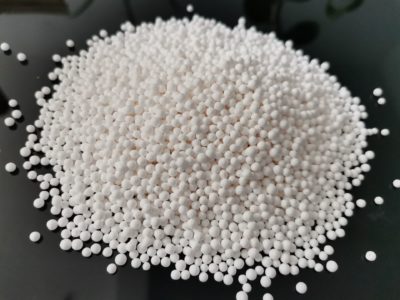Why do activated alumina balls have the ability to absorb and dry? The main reasons why activated alumina has the ability to adsorb and dry are as follows:
First of all, activated alumina has a large specific surface area. Activated alumina is obtained by calcining alumina powder at high temperature. The calcining process will cause the alumina particles to coalesce to form larger pores and porous structures. This porous structure makes activated alumina have a larger specific surface area, thereby increasing the contact area between it and water molecules and gas molecules, and improving the adsorption capacity.
Secondly, the surface of activated alumina has active hydroxyl groups (OH-) and alumina groups (Al-O-). These active groups can undergo physical adsorption or chemical adsorption with water molecules and other gas molecules. Physisorption refers to the weak attraction between molecules, while chemisorption refers to the formation of stronger chemical bonds between molecules. These adsorptions allow the activated alumina to absorb water molecules and other gas molecules and fix them on the surface, thus achieving the drying effect.
In addition, activated alumina also has good adsorption selectivity. It can selectively adsorb water molecules and some specific gas molecules, such as organic solvents, acid gases, etc. This is because the hydroxyl groups on the surface of activated alumina and the alumina groups have different affinities for different molecules. By adjusting the preparation conditions and surface treatment methods of activated alumina, it can have better selective adsorption performance, so as to realize the drying of specific substances.

activated alumina
In summary, the reason why activated alumina has the ability to adsorb and dry is because it has a large specific surface area, active hydroxyl groups and alumina groups on the surface, and good adsorption selectivity. These characteristics enable activated alumina to effectively adsorb water molecules and other gas molecules to achieve a drying effect.

